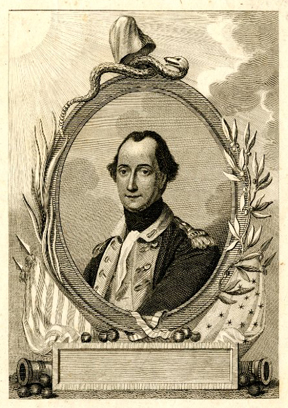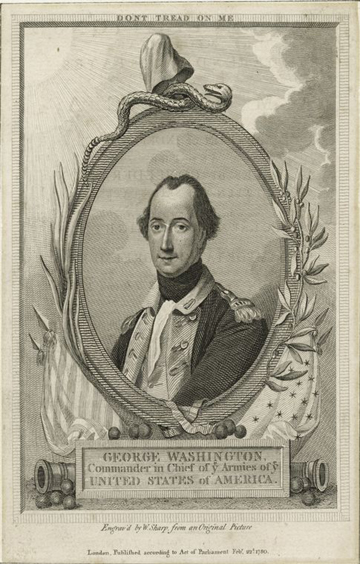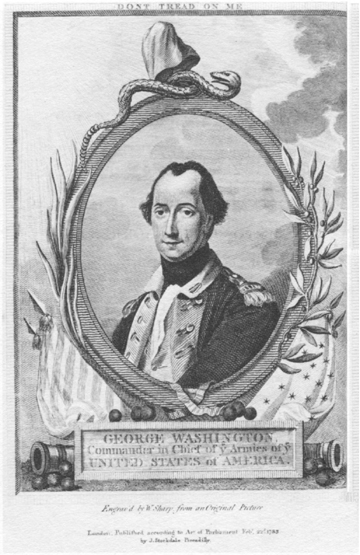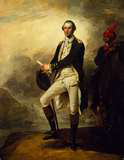| |
Version I: As shown, before all lettering. Collection: British Museum.
Version II: As shown. Collections: British Museum, New York Public Library.
Version III: As shown,
with publication changed to "Feby. 22d 1783. / by J. Stockdale
Picadilly." Collection: Library of Congress.
Published
in: (Version I) Charles Henry Wharton, A Poetical
Epistle to his Excellency George Washington (London, 1780).
(Version II) William Jackson, Constitutions of the Several Independent
States of America (London, 1783).
Notes:
Charles Henry Wharton was a Roman
Catholic priest in England when he wrote his "Poetical Epistle."
The poem was first published in Annapolis in 1779 in conjunction
with John Bell's Short Sketch of George Washington's Life and
Character. The volume was reprinted in London in 1780
with this engraving by Sharp.
The
London publisher originally intended the engraving to be executed
by Benjamin West, based upon an earlier French engraving (presumably
Boglewood 2814, published by Esnauts and Rapilly
and attributed to Jean-Victor Dupin), which he had in his possession.
Indeed, Sharp seems to have adopted the cannon and flag motif from
the French print.
However, as Wick has observed, the
likeness, uniform and posture of Washington bear a strong resemblance
to the Washington portrait painted by Trumbull upon his arrival
in London in July 1780. Wick speculates that the Sharp engraving
actually issued later than the 22 February 1780 stated in it,
and that Sharp was therefore able to incorporate elements from the
Trumbull painting. |



